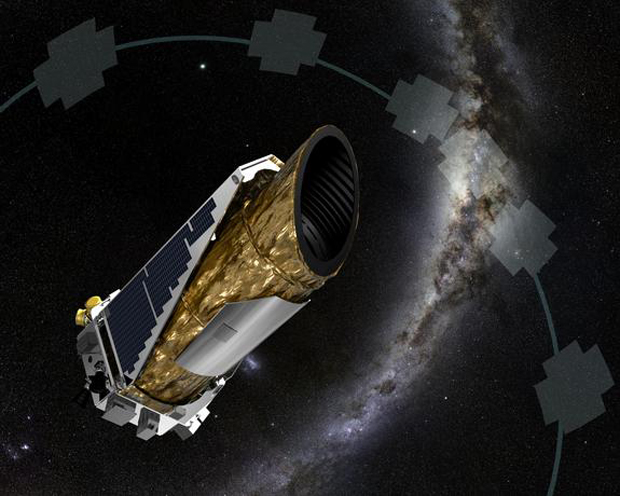
NASA's Kepler space telescope has recovered fully from a recent anomaly and is scanning the heavens for exoplanets once again, agency officials announced today (April 22).
Kepler's handlers began prepping the spacecraft — which has discovered about half of all known alien planets to date — for a return to duty on Tuesday (April 19), and that process is now complete, mission team members said.
"The spacecraft is now ready for science operations, officially starting K2's new gravitational microlensing campaign, known as Campaign 9 or C9," Kepler mission manager Charlie Sobeck, of NASA's Ames Research Center in Moffett Field, California, wrote in an update today. [Gallery: A World of Kepler Planets]
Kepler went into "emergency mode" on April 8, for reasons that remain unclear.
"The nature of the problem has indications of a transient event, which triggered a barrage of false alarms that eventually overwhelmed the system," Sobeck wrote. "Power-cycling the onboard computers and subsystems appears to have cleared the problem."
Mission team members managed to coax Kepler out of emergency mode on April 10, and they've spent the last 12 days simultaneously investigating the problem and getting the observatory back up to speed.
Kepler has had health problems before. In May 2013, the second of the spacecraft's four orientation-maintaining reaction wheels failed, ending Kepler's original planet hunt. (The telescope was designed to find exoplanets by noting the tiny brightness dips these worlds cause when crossing their host stars' faces, and this work requires ultraprecise pointing.)
Get the Space.com Newsletter
Breaking space news, the latest updates on rocket launches, skywatching events and more!
However, mission team members soon figured out a way to stabilize Kepler in space using the two remaining reaction wheels and sunlight pressure. This breakthrough made it possible for Kepler to embark on a new mission, known as K2, in 2014.
During K2, Kepler is hunting for alien planets on a more limited scale than before, and also investigating a variety of celestial objects and phenomena, such as supernovas located far away and asteroids and comets found in Earth's own solar system.
These K2 activities are divided into a series of 90-day "campaigns." As Sobeck wrote, the current one, Campaign 9, focuses on searching for exoplanets using a technique called gravitational microlensing. This strategy takes advantage of the fact that a foreground star's gravitational field bends and magnifies the light from a distant star or other light source that the object passes in front of. This "lensing" effect can reveal the presence of planets orbiting the foreground star.
To date, Kepler, which launched in March 2009, has discovered 1,041 alien worlds and more than 3,600 additional "candidates." Mission team members have estimated that about 90 percent of these potential planets will eventually be confirmed by follow-up analysis or observations.
The total number of known exoplanets is about 2,000 at the moment; the number varies depending on which database is consulted.
Follow Mike Wall on Twitter @michaeldwall and Google+. Follow us @Spacedotcom, Facebook or Google+. Originally published on Space.com.
Join our Space Forums to keep talking space on the latest missions, night sky and more! And if you have a news tip, correction or comment, let us know at: community@space.com.

Michael Wall is a Senior Space Writer with Space.com and joined the team in 2010. He primarily covers exoplanets, spaceflight and military space, but has been known to dabble in the space art beat. His book about the search for alien life, "Out There," was published on Nov. 13, 2018. Before becoming a science writer, Michael worked as a herpetologist and wildlife biologist. He has a Ph.D. in evolutionary biology from the University of Sydney, Australia, a bachelor's degree from the University of Arizona, and a graduate certificate in science writing from the University of California, Santa Cruz. To find out what his latest project is, you can follow Michael on Twitter.









